What is a terahertz wave?
The terahertz (1 THz = 1012 Hz) region of the electromagnetic spectrum covers the frequency range from roughly 0.1 to 50 THz. In terms of more familiar regions, the THz regime lies between the microwave and infrared regimes.
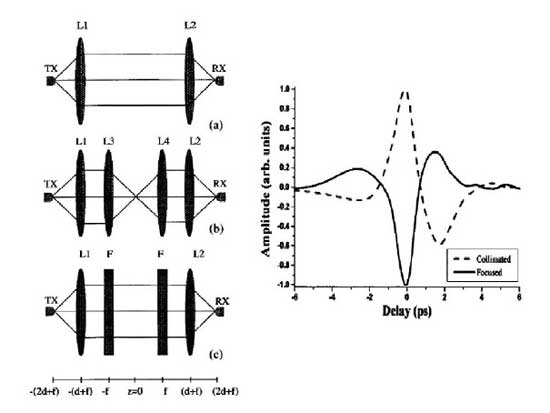
What’s so special about THz?
The THz region lies in a technologically awkward space. Research towards the development of electronic oscillators capable of reaching THz frequencies pushes out the limits of high-speed electronics. From the other end, ultrafast optical research typically deals with oscillations on the order of 1015 Hz, three orders of magnitude too large. The bandwidth of a typical ultrafast laser pulse is on the order of 1012 Hz, a property which we can exploit to generate THz waves.
The point of generating THz waves is that there is very interesting physics in this large spectral region. With THz, it is possible to probe dynamics of such far-ranging systems as: intersubband transitions in semiconductors, vibrational levels in molecules, and phonon resonances in crystals, for example. Other practical applications for imaging with THz beams are also being developed.
From a pure optics standpoint, THz waves offer unique measurements opportunities. Optical detectors are “square-law” detectors, measuring only the intensity of the light, and losing all phase information. When measuring THz beams, we can measure both the amplitude and phase of the THz electric field directly. This has permitted us to observe directly, for the first time, such phenomena as the Gouy phase shift, for a light beam passing through a focus, as you can see in the figure below.
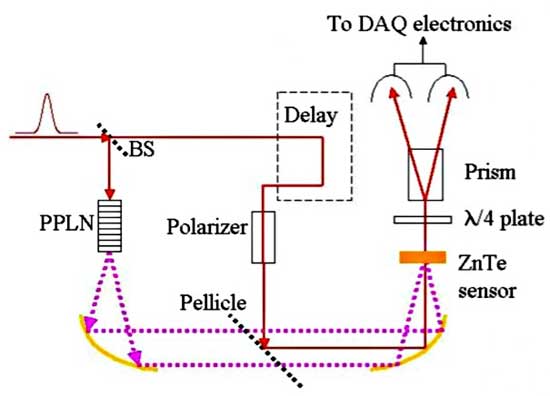
How do you make THz?
See Figure 2 below. We use the nonlinear properties of a crystal to generate the wave. A short laser pulse hits a crystal — we generally use zinc telluride (ZnTe) or lithium niobate (LiNbO3). The laser pulse induces a second-order nonlinear polarization, proportional to the intensity envelope of the laser pulse. For ultrafast pulses (on the order of 100 femtoseconds or shorter), the generated polarization peaks around a few terahertz. The terahertz field we measure is the radiated field of the polarization. This process is known as optical rectification.
The electric field and its power spectrum generated in a 1 mm thick ZnTe crystal are shown below.
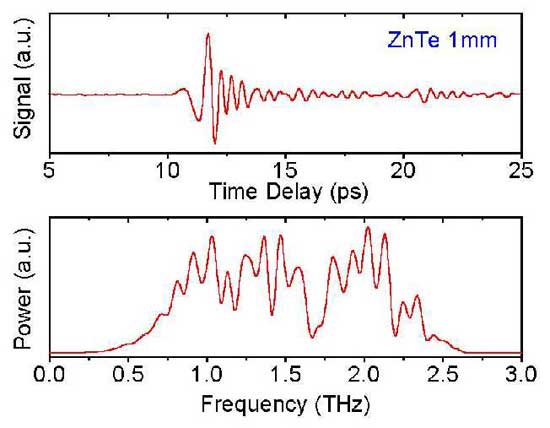
Lately, we’ve been working with periodically-poled lithium niobate (PPLN). The physics of the situation is similar to ZnTe, but the results are dramatically different. In PPLN, we can generate half of a wave in each domain of the crystal. Stacking together many alternating domains produces a THz waveform consisting of many oscillations. By changing the length of the ferroelectric domains, we can change frequency of the radiation. Generation of THz waves with PPLN crystals opens up new doors in high-resolution THz spectroscopy. In the figure below, we show several THz waveforms generated by PPLN crystals with different domain sizes.
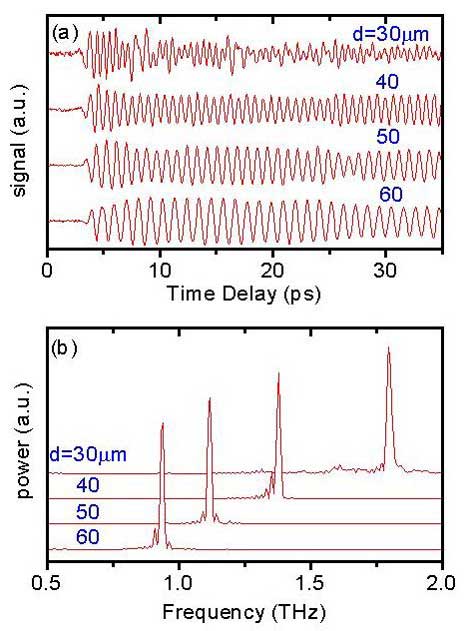
The primary use of PPLN crystals is high-efficiency generation of nonlinear phenomena in the optical region, e.g. second-harmonic generation, and parametric oscillation and amplification. Therefore, the detailed structure of the crystal domains is an important property to the people who make and use them. An interesting offshoot of our terahertz work is the ability to test the domain structure in a nondestructive manner. The first image below shows an optical microscope image of a PPLN crystal. Only the surface of the crystal is visible; from conventional optical microscopy, we cannot learn about the crystal’s interior domain structure. The second image is constructed from THz waves generated by the crystal. Our image, in this case, tells us about the domain structure inside the crystal.
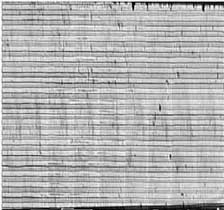
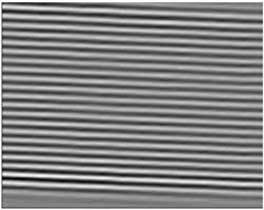
Where to find out more:
[1] A.B. Ruffin, J.V. Rudd, J.F. Whitaker, S. Feng, and H.G. Winful, “Direct observation of the Gouy phase shift with single-cycle terahertz pulses” Phys. Rev. Lett. 83, 3410 (1999).
[2] Y.-S. Lee, T. Meade, V. Perlin, H. Winful, T.B. Norris, and A. Galvanauskas, “Generation of narrow-band terahertz radiation via optical rectification of femtosecond pulses in periodically poled lithium niobate” Appl. Phys. Lett. 76, 2505 (2000).
[3] Y.-S. Lee, T. Meade, T.B. Norris, A. Galvanauskas, “Tunable narrow-band terahertz generation from periodically poled lithium niobate” Appl. Phys. Lett. 78, 3583 (2001).
[4] Y.-S. Lee, T. Meade, M.L. Naudeau, T.B. Norris, A. Galvanauskas, “Domain mapping of periodically poled lithium niobate via terahertz wave form analysis” Appl. Phys. Lett. 77, 2488 (2000).
